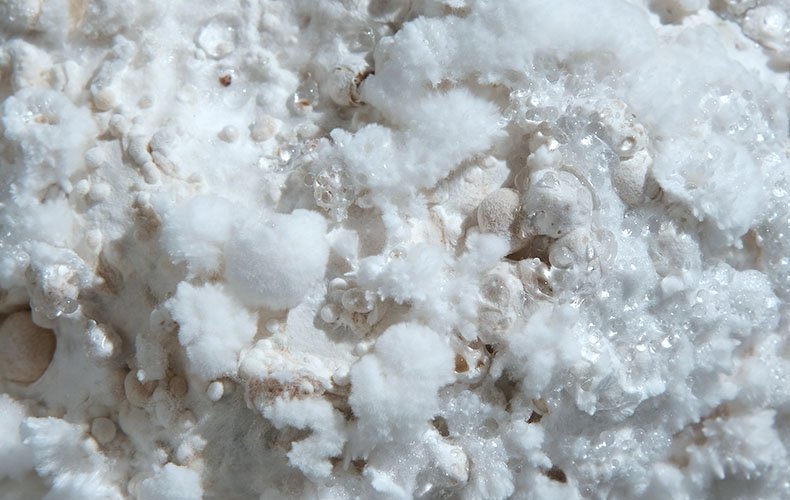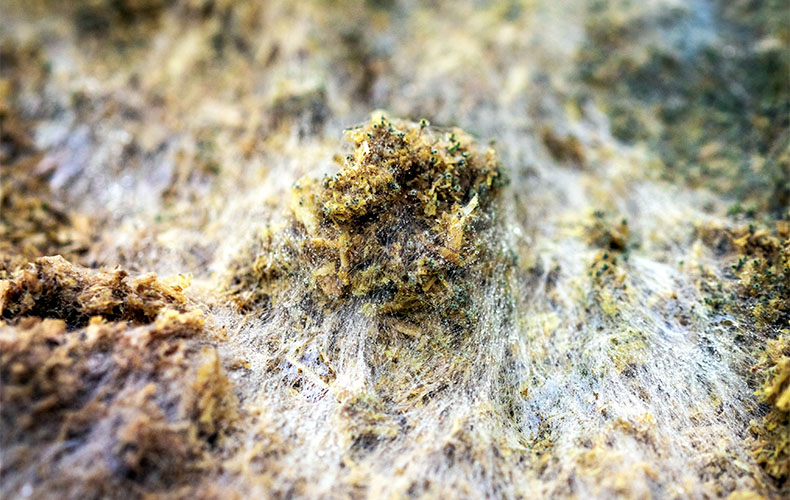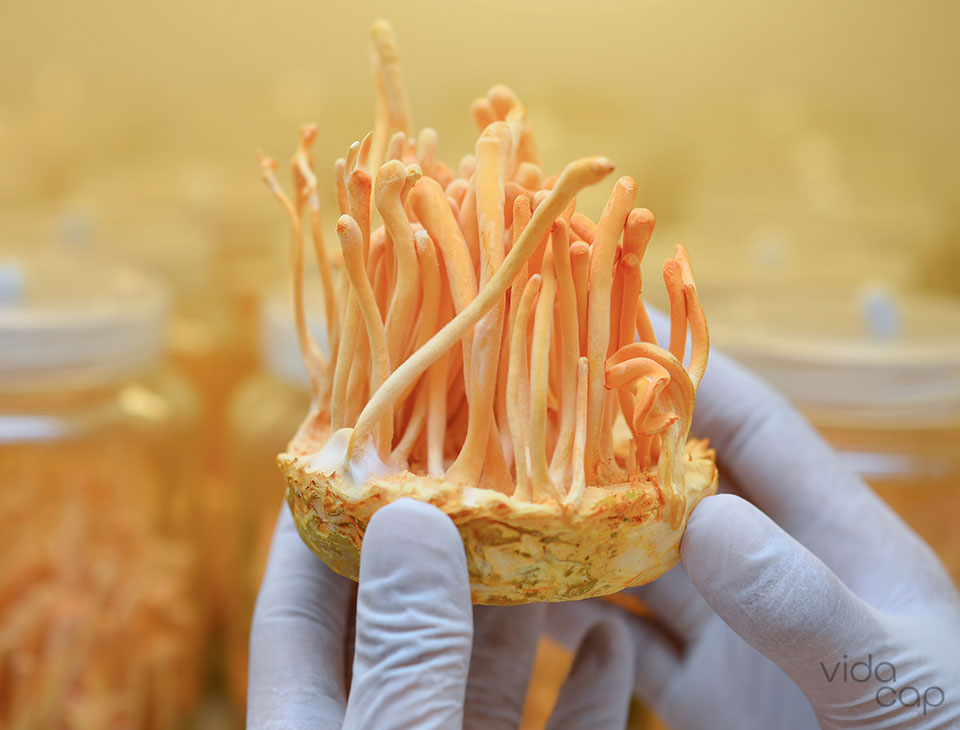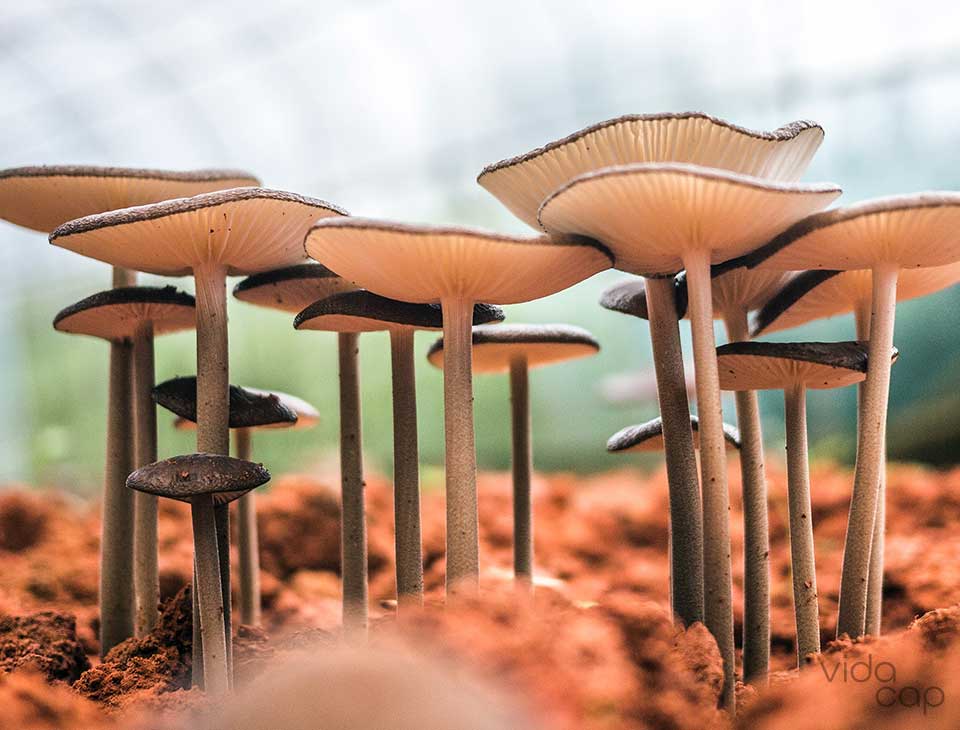
12 Common Mushroom Growing Problems and How to Solve Them
 Audrey Ferguson |
Updated on: February 29, 2024
Audrey Ferguson |
Updated on: February 29, 2024
Growing gourmet or medicinal mushrooms can be straightforward, but there are things that can and do go wrong. There are many factors that could stand in your way, including contamination, inappropriate growing conditions, and a simple lack of knowledge.
However, knowing the most common reasons for an unsuccessful grow will reduce the risk of mistakes and help you avoid many potential pitfalls. You will also be better equipped to troubleshoot and hopefully prevent your hard work from going to waste.
This in-depth guide explores some of the most common mushroom-growing problems you might encounter during each stage of the process and how to solve them.
Growing Mushrooms: The Basics
What mushrooms need to grow varies depending on the species, growing method, and whether you are growing indoors or outdoors. However, all varieties have a few basic requirements, including:
- Nutrients
- Moisture
- Fresh air
- Light
Failure to provide any of these will impair the mushrooms’ growth and result in disappointment. However, there are numerous other factors to consider, which we will discuss below.

If you are new to growing mushrooms, check out our beginner’s guide. Otherwise, read on to discover the most common mushroom-growing problems and how to solve them.
Mushroom Growing Problems
Below is a list of some of the most common issues you might encounter while growing mushrooms. It is not species-specific and is not exhaustive, but we have provided a general overview that should give you the tools you need for a successful harvest.
1. Contamination
Fungi need moist conditions to grow. Unfortunately, these environments are also ideal for contaminants like bacteria and mold to thrive. These microorganisms compete with the fungus for nutrients, inhibit its growth, and could eventually take over completely.
Contamination with bacteria and mold are among the most common mushroom-growing problems, especially in the early stages of mycelium growth before the fungus has developed its natural defenses. However, it is essential to keep contamination in mind at every stage of growth and deal with it immediately should it occur.
Solution:
It is crucial to maintain a sterile workspace and good personal hygiene. Clean all equipment with 70% isopropyl alcohol, wash your hands well, and wear gloves and a face mask where possible. Grains should also be properly sterilized and substrates pasteurized before use.
Anyone who is serious about growing mushrooms should invest in specialist equipment, such as a laminar flow hood and pressure cooker. The former effectively removes contaminants from the air, while the latter is necessary for sterilizing grains.
Beginners can get away without this equipment, but work should always be done inside a still air box to minimize the risk of contamination. You should also keep your mushroom project in a low-traffic area away from pets and disturb it as little as possible.
It is a good idea to familiarize yourself with the appearance of different contaminants. Healthy mycelium is white, and any brown, black, green, orange, or pink patches could be a sign of contamination. Remove affected bags or jars from the grow space and dispose of them immediately.
2. Lack of Moisture
Moisture is one of the most important environmental considerations when growing mushrooms. Without adequate humidity, the mycelium will dry out and die. Furthermore, mushrooms have a high water content, and if they do not have enough moisture while growing, they can become dry and brittle with cracked caps.
Solution:
Soak your substrate well and squeeze out any excess water before inoculating it with your spawn so that it will have enough moisture to grow.
If you are using a unicorn bag or plastic tub, the substrate should retain its moisture until you trigger fruiting. Then, you must either mist your container several times daily during fruiting or invest in a humidifier.
If you are growing mushrooms outdoors, you may need to water your substrate during dry weather. Choosing a naturally shady spot for your grow or using shade netting can help to minimize water loss.
3. Too Much Moisture
Too much moisture can be just as harmful as too little. Standing water quickly becomes stagnant and encourages the growth of contaminants like mold.
Solution:
Provide drainage, and do not overwater your substrate. Regular light misting is better than drenching your substrate in more water than it can readily absorb.
4. Lack of Fresh Air
Fresh air exchange is essential for healthy mushroom growth. If the environment contains too much carbon dioxide and not enough oxygen, your mushrooms may be stunted with small or deformed caps.
Lack of fresh air can also cause a problem called “fuzzy feet,” whereby mushrooms develop additional fluffy mycelium at the base of their stems. This is not necessarily harmful, but it means the fungus is wasting energy that could be put into producing more mushrooms.
Solution:
During fruiting, open your containers for a few minutes once or twice daily to allow fresh air exchange. Some growers recommend using a fan, although you can also fan your containers manually when misting.
5. Lack of Light
Mushrooms do not use light to produce energy in the same way as plants do, but they do need some light to develop properly. Mushrooms grown in dark areas tend to have long, spindly stems or lean in one direction as they search for the light.
Solution:
If you are growing mushrooms indoors, choose a room that receives some natural daylight or invest in a grow lamp. Outdoor growers usually don’t need to worry too much but should avoid heavily shaded areas.
6. Unsuitable Climate
Different mushrooms naturally grow in different climates and, therefore, prefer different temperatures. This is a vital consideration for outdoor growers in particular. Trying to grow a tropical species in a temperate region will likely be unsuccessful, and vice versa.
Solution:
Research which mushrooms will grow well in your region and opt for those if you are growing outdoors.
You have greater control over the environment indoors and can, therefore, grow a wider variety of mushrooms. However, you may need to invest in equipment such as a seedling heat mat to provide additional warmth for certain species.
7. Unsuitable Substrate
You can grow mushrooms on various substrates, including compost, wood, straw, coco coir, and more. However, choosing the right substrate for your mushrooms is essential.

Some varieties are fussier than others and will not grow unless you provide a specific substrate. For example, reishi and lion’s mane require wood and will not grow well on soil. Others, such as oyster mushrooms, are more versatile and grow on a variety of substrates.
Solution:
Research the mushrooms you intend to grow and make sure you provide their preferred substrate. You can also supplement the substrate with additional nutrients, such as manure or coffee grounds, to maximize your yield.
8. Faulty Spawn
Sometimes, a grow can be unsuccessful simply because of faulty grain spawn. This includes issues like contamination or the spawn not being transferred to the substrate quickly enough and dying.
Solution:
Always buy grain spawn from reputable suppliers with good reviews and a fast shipping time. Check your spawn for contamination when it arrives and transfer it to your substrate as soon as possible. You can store it in a refrigerator for a few days if necessary, but the longer you wait, the more likely it is that something could go wrong.
9. Using Too Much or Too Little Spawn
It is essential to add the right amount of spawn to your substrate. Using too little will result in slow colonization and leave it vulnerable to contamination. Meanwhile, using too much could cause the mycelium to generate excess heat through a process called thermogenesis.
Thermogenesis occurs as mycelium consumes nutrients from its substrate, producing heat. Using too much spawn means increased thermogenesis, potentially resulting in overheating and mycelium death.
Solution:
Research the appropriate amount of spawn to use for the overall volume of your substrate. Most experts recommend using around 20% spawn to 80% substrate, although this can vary depending on the mushroom species and substrate type.
10. Lack of Knowledge
Growing mushrooms is a fantastic way to learn about them, and you don’t need to be an expert to get started. However, not having a grasp of the basics could lead to mistakes and an unsuccessful grow.
Solution:
Before starting, research the mushrooms you want to grow. Learn about the mushroom life cycle and what to expect at each stage of growth. Check which varieties are suitable for your climate, and decide whether to grow them indoors or outdoors. Then, ensure you have all of the necessary equipment and supplies before you begin.
11. Lack of Patience
Growing mushrooms from scratch takes time, and impatience is potentially one of the most common problems for beginners.
For example, initiating fruiting before your substrate is fully colonized could result in low yields or, worse still, contamination. Another rookie mistake is not letting your pasteurized substrate cool properly before adding your spawn and killing it with the heat.
Attempting to do too much at once is also the downfall of many novices who may underestimate how labor-intensive mushroom growing can be. This could lead to them becoming overwhelmed and cutting corners, causing problems further down the line.
Solution:
Take your time to research each stage of the growing process thoroughly before beginning, and resist the temptation to rush.
If you are brand new to mushroom growing, you could try starting with a commercial mushroom grow kit. These are blocks of fully colonized mycelium that are ready to go; you just need to provide water and air to trigger fruiting. Armed with knowledge and confidence from your first successful grow, you can try using pre-made grain spawn or even creating your own.
12. Careless Harvesting
Once you have successfully produced your first mushrooms, you might think you are in the clear. However, there are still things that can go wrong. For instance, harvesting your mushrooms too early can mean they are underdeveloped, small, and light. Meanwhile, harvesting them too late can allow them to go bad and undo all your hard work.
You should also pick your mushrooms carefully to avoid damaging the mycelium. Many species will produce additional flushes of mushrooms if you keep the mycelium intact, so keep this in mind when harvesting.
Solution:
Research the mushrooms you are growing to determine the optimal time to harvest them. When you do, hold them at the base of the stem and gently twist them away from the mycelium.
You can also use scissors or a sharp knife to cut the mushrooms away from the mycelium, but ensure they are clean to avoid introducing contaminants.
Mushroom Growing Problems: The Bottom Line
Growing mushrooms is a fun and rewarding pastime. You will learn about the fungal life cycle and have the satisfaction of watching the fruits of your labor develop right before your eyes.
Although there are many possible pitfalls, most of them are easy to avoid with a bit of care and attention. Watch out for the most common mushroom-growing mistakes listed above, and you will be well on your way.
Our last tip is to label everything as you go and carefully log every stage of your project. Then, if something does go wrong, you should be able to pinpoint your mistake and avoid repeating it in the future.
-
new
 Amanita Muscaria Mushroom GummiesCalm | Mindfulness | Balance$38 Shop now
Amanita Muscaria Mushroom GummiesCalm | Mindfulness | Balance$38 Shop now- Experience a calming and balancing buzz effect.
- 8 Delicious Berry-Mango and Citrus gummies
- 500mg amanita extract per gummy for best results
- Proudly vegan and gluten-free
- Manufactured in the USA with high-quality standards

Audrey has worked as a registered dietitian for 6 years. She graduated from the University of Florida in 2013 with a Bachelor of Science degree. In 2014 she began an internship with the Veterans Affairs Healthcare System, and was hired as an Outpatient Dietitian following graduation. She started her career counseling a variety of patients with different health concerns and disease states. After a few years into practice, she found her passion was working in cancer care, and has spent the last 4 years specializing in oncology nutrition.
In her practice, Audrey has spent a significant amount of time reviewing literature on herbal and dietary supplements in the cancer care setting. Through her work at Vidacap, she hopes to continue to expand her knowledge and understanding of the benefits of supplements in conjunction with promoting a healthy, balanced diet and management of overall health and well being.





